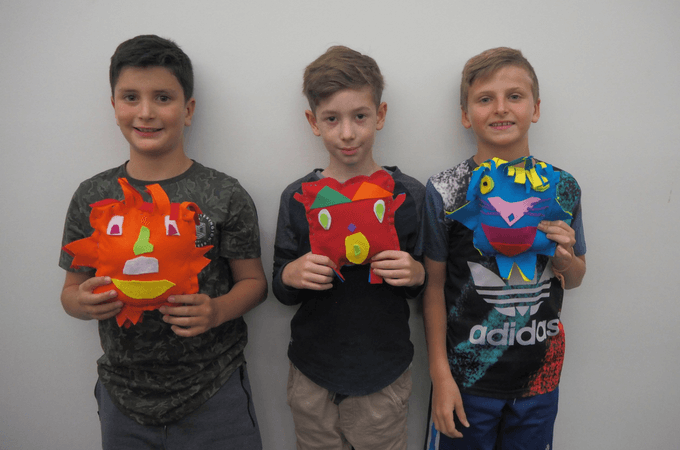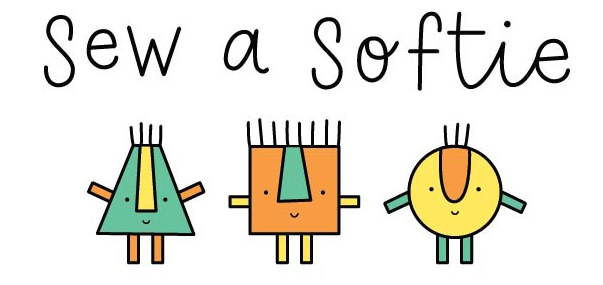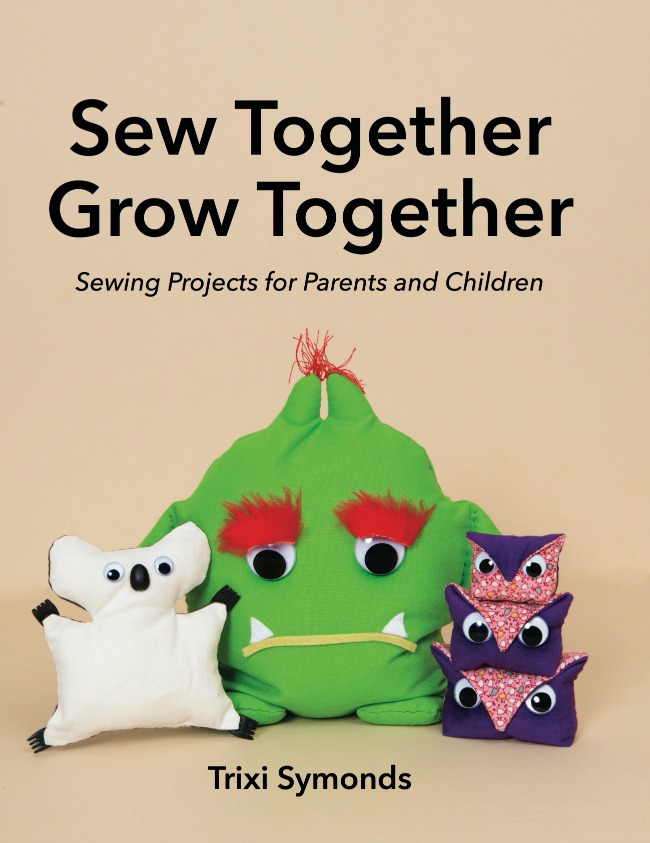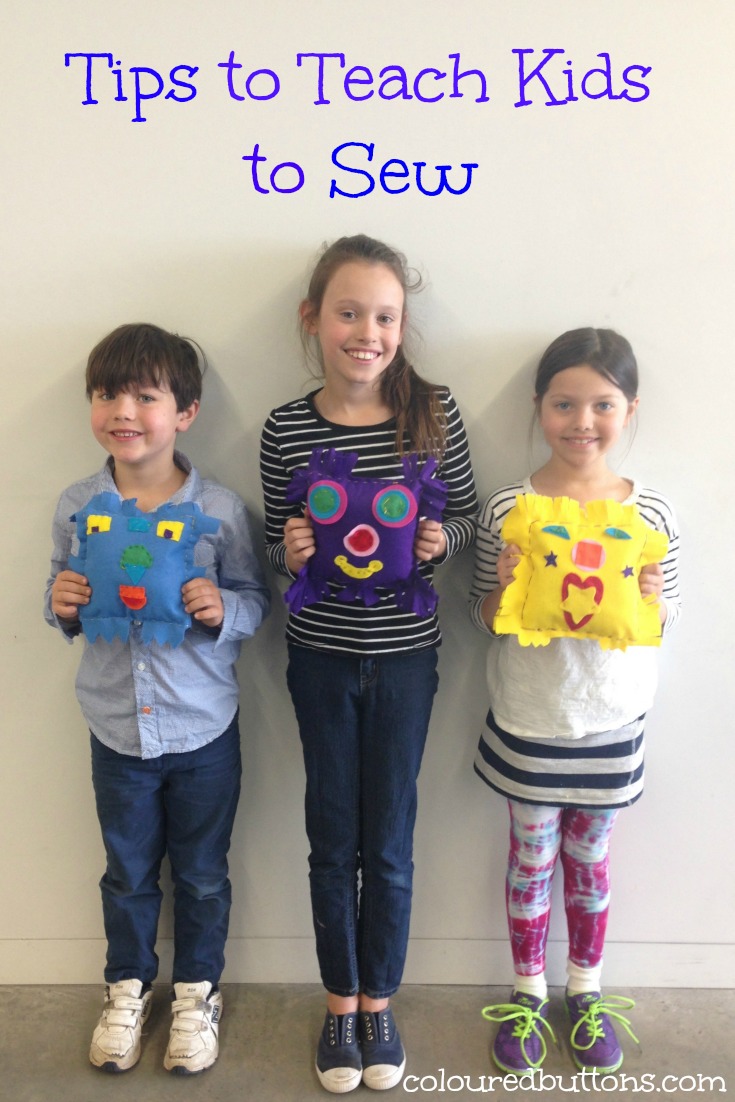Thinking about teaching a child to sew?
My youngest daughter Yiscah first started sewing when she was three. I vividly remember how she used to peek into the room whenever I was teaching a class so she could watch the older girls sew. After every class she’d ask me why she couldn’t join in. Being the wise parent, I told her that she was too little just yet but she always insisted she wasn’t. One day I decided to let her sew something simple and to my surprise, she did a pretty good job… and she altered forever my ideas about when you should start teaching a child to sew. I still find people who believe, as I once did, that children have to be a bit older before they start sewing. Not true. So here are some tips to help you maximize enjoyment and minimize problems when you teach a child to sew.
1. Getting them excited
There are lots of ways to get your child excited about sewing. Showing them a book of projects and letting them choose what they wish to make is always a good idea … as is letting them choose their fabrics and the colors of their thread. The basic rule here is simple: the more they do by themselves, the more they’ll enjoy it.
Even if they can’t manage the sewing on a project they’ve chosen, just watching Mum involves them more deeply than we might suspect and is a sure way to ignite their desire to sew something all by themselves.

2. Using good quality materials
Good materials are essential for a good experience. Sewing supplies are not expensive, so make sure you choose good quality felts, fabrics and thread.
Acrylic felts are the least expensive but they can feel a bit hard and scratchy to sew with. I personally love using wool blend felts as they’re soft, easy to sew with and reasonably priced but you can find beautiful acrylic felts too.
I prefer to use regular sewing cotton, and I recommend using a good brand as cheaper products tend to break. Recently I’ve started using Aurifil cotton mako thread and love it.
Using an embroidery or chenille needle with a large eye makes it easy to thread. Make sure your needle isn’t blunt. Sewing with a blunt needle can be difficult and frustrating. And it’s a good idea to first sew a few stitches yourself in order to check that everything works as it should.
3. Stressing safety
Explain to your child that scissors and needles are sharp and can be dangerous if not used sensibly. In classes I stress that needles have to be put back in containers and we always do a floor search to check for needles that may have dropped. Scissors are always closed.
It doesn’t really matter what safety behaviors you decide on, what matters is that your child sees that you treat these things with caution and knows that this is what you must do when you sew. I’ve found that when children really want to do something that requires responsibility, they have no difficulty behaving as they should.
4. Accepting that wonky is ok
Young children begin to sew with large, wonky stitches and their sewing lines are often crooked. With a little practice, however, their stitches rapidly improve. Don’t do the work for them. Let them sew their own stitches and they will be proud of what they have accomplished.
Sometimes young children’s work becomes messy simply because they forget to look at what they are doing. A gentle reminder to look at their work while sewing can bring about a miraculous improvement. Hand sewing doesn’t require excessive concentration and the modest demands it does make will actually help to improve your child’s ability to concentrate.
5. Making the projects your own
There’s nothing wrong with copying a project exactly as it’s given but this never really compares with the feeling you get when you make a project your own. So don’t be afraid to adapt things, to change them, and to make them to suit your own and your child’s interests and wishes.
If you’re looking for a simple hand project to make with your child you can try this
quick and easy softie your kids will love to sew.
You can also drop in to
Mollymoo Crafts where Michelle has adapted Baby in a Pouch. The original project is small enough to fit into the palm of a child’s hand but Michelle and her daughter wanted something that could be hugged, so they made the baby and her pouch much larger giving the project a very different feel.
SaveSave
SaveSave
SaveSave
SaveSave
SaveSave
SaveSave








My niece is constantly after me for little sewing projects
She is six, low on skills but high on motivation 🙂
so I'm looking forward to part 2!!!
xo
Wanting to sew is the best starting point…and with a little practice she'll be making her own cushions and softies!
Trixi, so happy to have discovered you and the Zenki way! My grandson’s kindergarten teacher asked me if I could do an easy sewing project with the kids and this seems perfect. I was already thinking a simple stuffie of their own design, from my huge collection of fabric and felt and doodads …but these kids are a lot younger than I’ve worked with before.
But now I’m confident, because you’ve made it so much easier with your great ideas for prep, organization, and design.
Hi Liz, I am so happy you discovered me and the zenkis too!! I’d LOVE to see what the kinder kids make!! And please let me know if you have any questions!! Thanks for your sweet message 🙂 Trixi